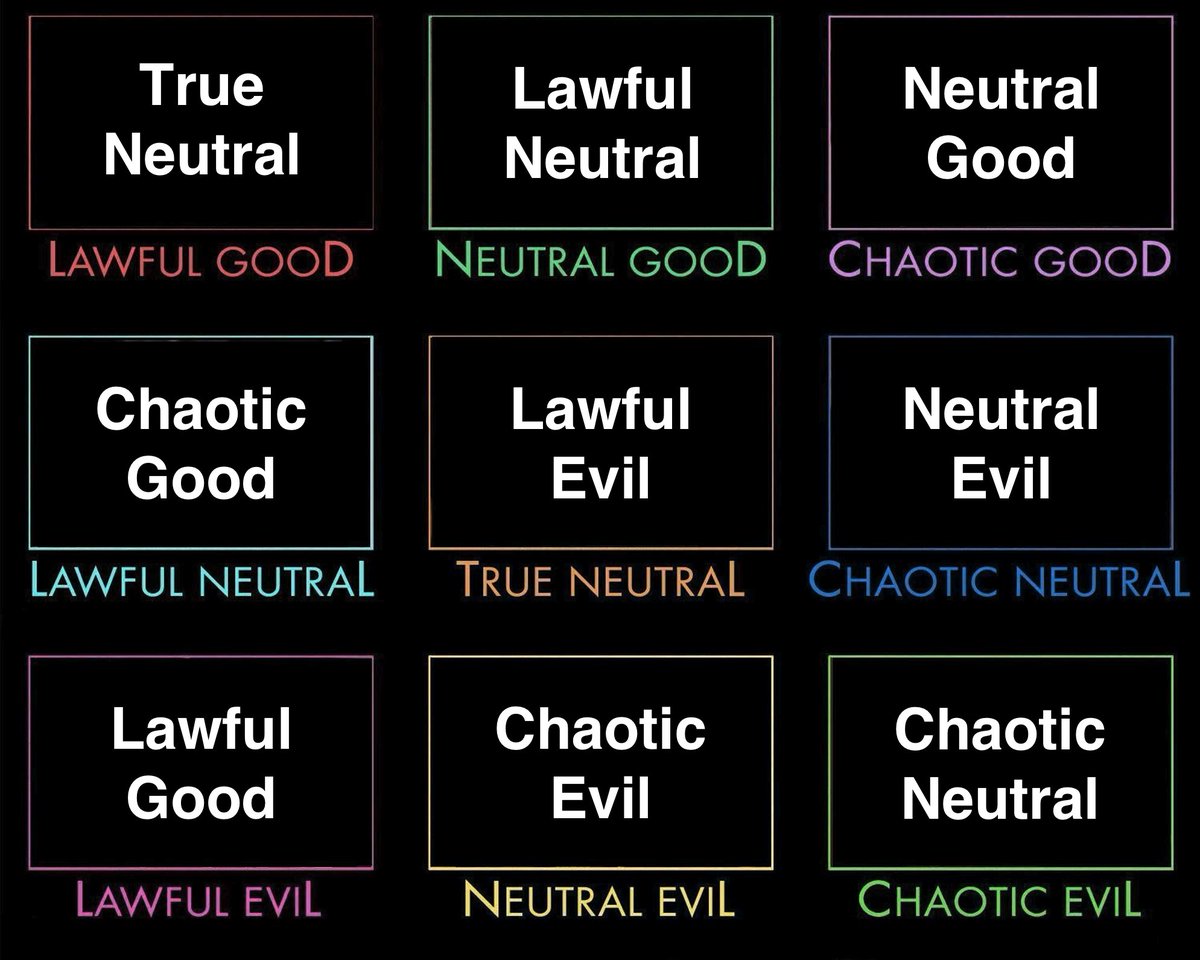D&D Alignment Chart

In the vast realm of Dungeons & Dragons (D&D), where heroes battle dragons, navigate treacherous dungeons, and confront evil sorcerers, one fundamental aspect shapes the essence of characters’ motivations and actions: the alignment chart. This iconic tool categorizes characters’ moral and ethical inclinations, providing a framework for players to understand their role within the game world. With its roots deeply embedded in the game’s lore and philosophy, the D&D alignment chart offers players a nuanced exploration of morality, guiding their decisions and shaping the narrative. Let’s delve into the intricacies of this chart, dissecting its components and unraveling its significance in the realm of tabletop role-playing.
The Origins of Alignment:
The concept of alignment traces its origins to the earliest editions of Dungeons & Dragons, where it served as a crucial aspect of character creation. Initially introduced in the game’s first edition in 1974, alignment provided players with a means to define their characters’ moral and ethical perspectives within the game world. Over the years, it evolved into a cornerstone of D&D’s identity, influencing character development, role-playing dynamics, and storytelling.
The Alignment Chart:
Central to the alignment system is the alignment chart, a grid divided into nine distinct alignments, each representing a combination of moral and ethical principles. At its core, the chart juxtaposes two axes: the moral axis, ranging from good to evil, and the ethical axis, ranging from lawful to chaotic. This creates a matrix of alignments that encompass a spectrum of beliefs and behaviors, offering players a rich tapestry of character possibilities.
Lawful Good:
Characters aligned as Lawful Good uphold the principles of order, justice, and compassion. They abide by a strict code of ethics and strive to uphold the greater good, often valuing honor, duty, and righteousness above personal gain. Paladins exemplify this alignment, dedicated to serving justice and protecting the innocent at any cost.
Neutral Good:
Neutral Good characters embody benevolence and altruism without being bound by strict laws or codes. They seek to help others and promote kindness and fairness in the world, often acting on their conscience rather than adhering to external rules. Rangers and healers frequently embody this alignment, prioritizing empathy and goodwill in their actions.
Chaotic Good:
Chaotic Good characters value individual freedom and rebel against tyranny and oppression. While they champion noble causes and fight for justice, they eschew conformity and authority, often embracing unorthodox methods to achieve their goals. Rogues and freedom fighters epitomize this alignment, challenging societal norms and championing personal liberty.
Lawful Neutral:
Lawful Neutral characters prioritize order and structure above all else, adhering strictly to a personal or societal code of conduct. While they may not necessarily pursue altruistic or malevolent goals, they believe in upholding the law and maintaining stability in society. Judges and bureaucrats typify this alignment, valuing structure and predictability in their actions.
True Neutral:
True Neutral characters embody balance and neutrality, navigating the world without bias or allegiance to any particular cause. They are motivated by self-interest and survival, often acting in their own best interest while remaining indifferent to larger conflicts. Druids and hermits often embody this alignment, embracing the natural order and seeking harmony with the world around them.
Chaotic Neutral:
Chaotic Neutral characters epitomize unpredictability and individualism, eschewing societal norms and moral absolutes in favor of personal freedom and whim. They are driven by their desires and impulses, often pursuing their own interests without regard for consequences or moral considerations. Mercenaries and tricksters exemplify this alignment, embracing chaos and reveling in unpredictability.
Lawful Evil:
Lawful Evil characters embody tyranny and oppression, using the guise of law and order to further their nefarious agendas. They exploit systems of power and control to achieve their goals, often displaying a ruthless adherence to rules and hierarchy. Dark lords and corrupt officials typify this alignment, wielding authority to serve their own selfish ends.
Neutral Evil:
Neutral Evil characters are driven by self-interest and malevolence, acting without regard for moral or ethical considerations. They pursue their desires ruthlessly, often employing deception and manipulation to achieve their aims. Assassins and dark wizards often embody this alignment, embracing darkness and cruelty in their pursuit of power.
Chaotic Evil:
Chaotic Evil characters revel in chaos and destruction, spreading mayhem and suffering wherever they go. They delight in violence and anarchy, embodying the most depraved aspects of humanity without remorse or restraint. Demons and mad cultists epitomize this alignment, embodying the forces of chaos and entropy.
Conclusion:
In the realm of Dungeons & Dragons, the alignment chart serves as a guiding light for players, illuminating the moral and ethical landscapes of their characters’ journeys. Whether champions of justice, agents of chaos, or enigmatic neutrals, characters find their place within this intricate web of alignments, shaping the narrative and defining their roles in the world. As players embark on epic quests and confront the forces of darkness, the alignment chart remains a timeless testament to the enduring allure of moral complexity and ethical dilemmas in tabletop role-playing games.
